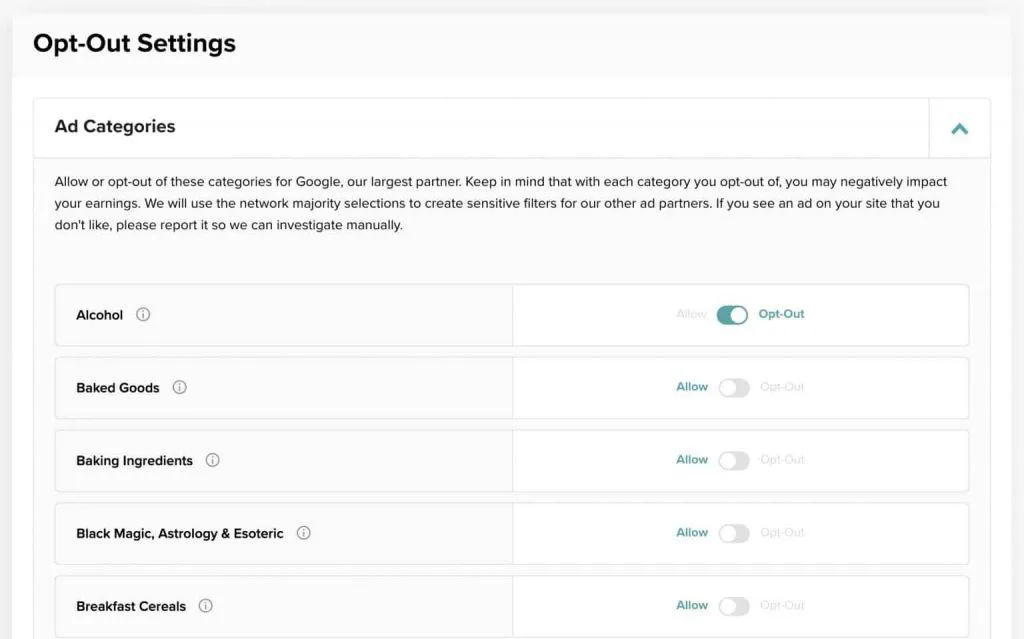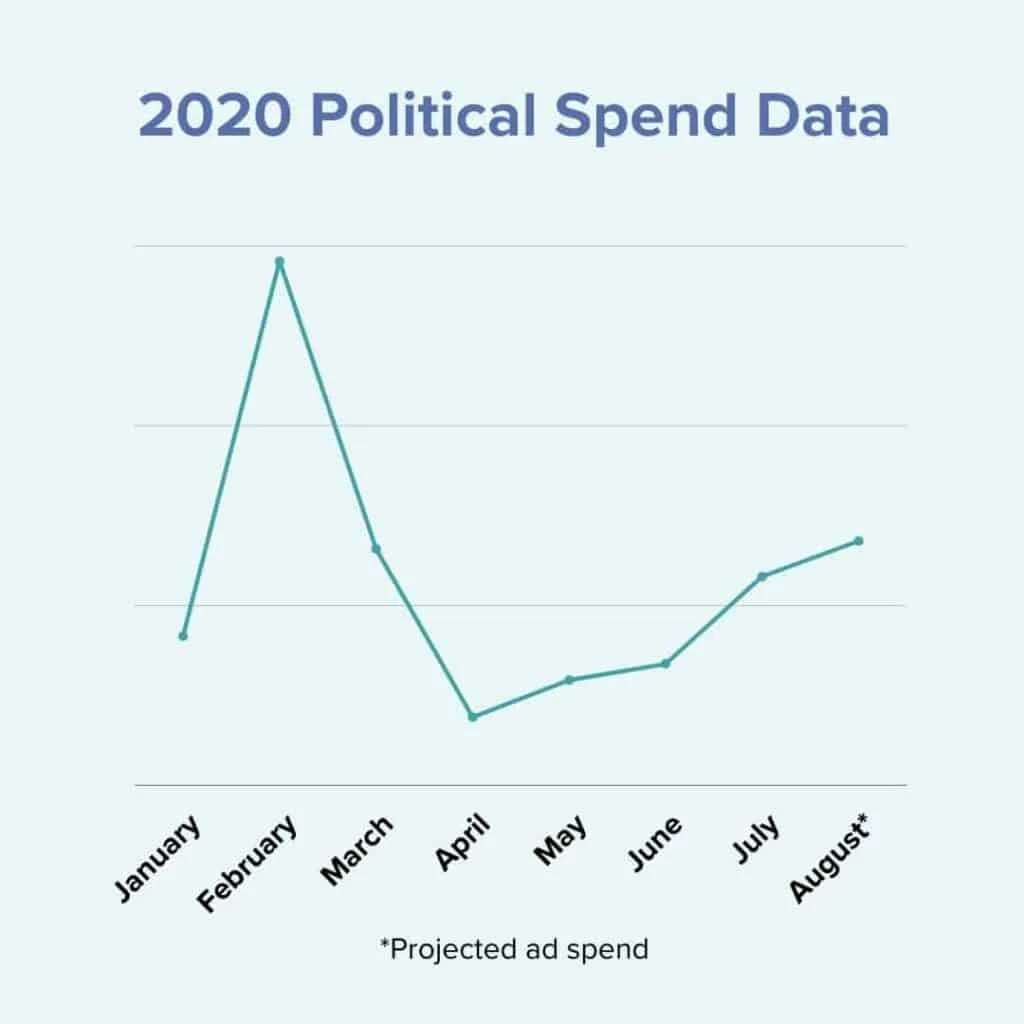Political Advertising in 2020 – Behind the Numbers with Brad


Unless you’ve been living in the cave, or in a bunker off the grid (wouldn’t blame you if so … 2020 amirite?), you may have noticed some fairly major events happening in our nation.
The events of 2020 have affected the economy in unprecedented ways, and digital advertising is certainly no exception.

Global shutdowns due to COVID-19 earlier this year massively affected how the general population consumed information, with advertising budgets drastically slashed as marketers waited for more stable times.
As if that weren’t enough, we’re now in the midst of another major event that impacts digital advertising and publishers’ earnings.
That’s right, it’s a presidential election year, and ABC News is reporting that $6.7 billion will be spent on political advertising in 2020, with 54% of that coming between late August and Election Day.
The Democratic nominee for President alone plans to spend a record $280 million across the major battleground states, with more than 20% of those funds designated for online advertising.
So how can Mediavine publishers take advantage of this ad spend, and if they do, what effect will it have on their overall earnings?
First, let’s get into the weeds a bit and discuss how this advertising spend actually works in the digital marketplace.
The Interactive Advertising Bureau (IAB) categorizes all ads into special categories and subcategories. The categories are set up at a high level with subcategories that relate to the main category.
For example, there is a category for Food & Drink (IAB-8) with a variety of subcategories ranging from Cajun/Creole (IAB8-3) to coffee/tea (IAB8-6) to vegan (IAB8-16).
Politics falls under the category of Law, Government and Politics (IAB11), in the subcategory of IAB11-4.
This means that when any political campaign, Political Action Committee (PAC) or Advocacy Group advertises a political issue, the Demand Side Platform (DSP) will likely categorize that advertiser as political and assign the IAB code of IAB11-4.
Mediavine publishers have the ability to opt-out of certain categories that correspond with these IAB designations.

When a user loads your webpage and begins to scroll through your content, Mediavine sends out what the industry calls “bid requests” to all of our advertising partners.
That bid request contains data around the ad unit for each specific site. This includes what sizes are allowed to serve — as well as the device the user is using, the geo-location, the general category of the website on which the ad will display and any opt-outs that the publisher has requested.
For example, if you opt out of political ads, the bid request contains a “blocked category” or “bcat” message instructing each ad partner to exclude any advertiser in that category from bidding for that particular ad unit.
Unfortunately not. There are no subcategories for politics corresponding with party affiliation. It is an “all or nothing” categorization.
Unfortunately, the system is not perfect. Some DSPs choose not to listen to these signals we send them, or mis-categorize the advertiser so that our signals, while correct on our end, are not matching on theirs.
Let’s get down to brass tacks: Enabling political ads on your site will undoubtedly increase your overall earnings.
Working with our Director of Business Intelligence, Cynthia Butler, we were able to look at the average CPM differences between those publishers who run political advertisements versus those who opt out.
Our data shows us that the average Mediavine publisher will see around an 8% increase in average display CPMs as a result of showing political ads on their websites.
Anytime you’re able to increase average CPMs, you put more pressure on the auction. This means ALL advertisers have to work harder and pay higher prices to win an impression on your page.
More auction pressure means higher RPMs, every time.
The better news? It looks like political spending is once again starting to ramp up.
We’ve pulled political spend data from our top partners from the beginning of 2020 until now, and included that data in the graph below.

The first quarter of 2020 showed strong political spend, particularly because of the primaries that occurred then. This spike, during what is typically the worst quarter of the year, and with a pandemic and shutdowns in the mix, shows the potential political money that could be flooded into digital advertising as we get closer to Election Day in November.
While this spend dropped off sharply with the conclusion of the primaries, we have seen a staggering 350% increase in spending from April to August as election season starts to heat up again.
We fully expect this to substantially increase over the next 10 weeks.
The purpose of this post is not to pressure anyone to enable ads for the sole purpose of earning a few extra dollars. If political ads aren’t for you and you don’t want them on your site, that’s exactly what the opt out in your Dashboard is there for.
Mediavine’s job as an ad manager is to give you the ability to earn (or not earn) from this massive spending pattern, and give information to our publishers about how these choices will affect their overall income.
We strive to assist publishers in making informed decisions — your decisions — as part of our mission to help content creators create sustainable businesses during these ever-changing times.
We completely understand that this type of advertising is not for everyone, especially given the current political climate, but hopefully with this blog post you can feel confident in making an informed decision before you opt in, or out, of political advertising.
Stay up to date with the latest from Mediavine
As the digital advertising landscape evolves, the need for effective data management and compliance has never been more critical. As part of our commitment to providing exceptional solutions for our …
Welcome to the much-anticipated release of the fifth-annual edition of “The Best eCPM Days of the Year” calendar. Each year, we analyze historical trends to provide publishers with a graphical …
“Let’s talk about politics.” We know. This is a phrase absolutely no one wants to hear uttered around the dinner table or backyard barbecue these days. But hear us out. …